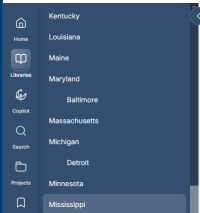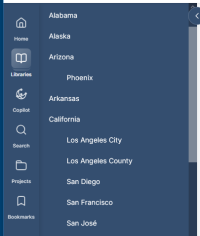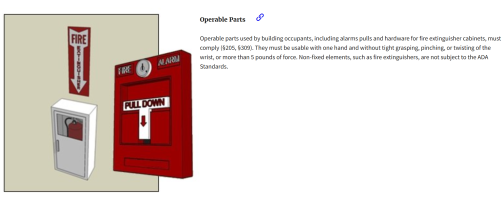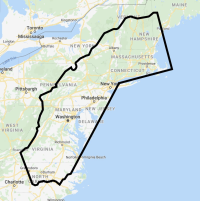We can't exactly just change them, but we can make more stringent requirements if we can show the justification and we register them with the appropriate state agency.I was licensed to practice architecture in California for twenty years (plus or minus). I surrendered my license when their continuing education requirements became too onerous. I was getting plenty of hours (needed to maintain my BO license in my home state), but California wouldn't grant credit for classes put on by my state government. I wasn't doing work in California, so I stopped renewing.
Apparently that was a good decision. IMHO, there's no point in adopting a state building code if every city and state agency can just change things around on a whim.
-
Welcome to The Building Code Forum
Your premier resource for building code knowledge.
This forum remains free to the public thanks to the generous support of our Sawhorse Members and Corporate Sponsors. Their contributions help keep this community thriving and accessible.
Want enhanced access to expert discussions and exclusive features? Learn more about the benefits here.
Ready to upgrade? Log in and upgrade now.
You are using an out of date browser. It may not display this or other websites correctly.
You should upgrade or use an alternative browser.
You should upgrade or use an alternative browser.
Help me decipher California's Existing Building Code
- Thread starter Yankee Chronicler
- Start date
Yankee Chronicler
SAWHORSE
We can't exactly just change them, but we can make more stringent requirements if we can show the justification and we register them with the appropriate state agency.
That's basically a distinction with no difference. The result is the same -- there isn't "A" building code in California, there are about a dozen. My home state got one thing right -- when we first adopted a mandatory statewide building code, the legislature not only made it so that municipalities (and agencies) can't amend the building code(s), they also took out the provision allowing local building officials to grant modifications. Which makes sense -- we have about 175 jurisdictions in a fairly compact geographic area. If every local building official were allowed to grant modifications, we wouldn't have one building code, we'd have 175 building codes. That doesn't benefit anyone.
TheCommish
SAWHORSE
Same happen in Massachusetts in 1975 all local codes were sunsetted and one state wide building code in place. If there is a special circumstance you can petition the BBRS for a local modification, no amendments have been granted in 20 years that I know of.
arwat23
SAWHORSE
The AHJs around me do very little alterations to the Building Code. Most add definitions or adjust Ch 1 of each code, but those effectively don't change anything from an end-user perspective. A lot of them involve enforcement and aren't related to plan review / building permits. For example, one town near me makes some alterations to section 1015 in the building code, but all of the changes are just clarifications or meant to "force" what's already considered standard practiceThat's basically a distinction with no difference. The result is the same -- there isn't "A" building code in California, there are about a dozen. My home state got one thing right -- when we first adopted a mandatory statewide building code, the legislature not only made it so that municipalities (and agencies) can't amend the building code(s), they also took out the provision allowing local building officials to grant modifications. Which makes sense -- we have about 175 jurisdictions in a fairly compact geographic area. If every local building official were allowed to grant modifications, we wouldn't have one building code, we'd have 175 building codes. That doesn't benefit anyone.
The only changes I see that usually make a noticeable difference are in Fire Code, but half of those changes apply to almost every jurisdiction already (why they don't just make those things part of the state's code is beyond me) and the other half are so inconsequential that they either only affect a few permits a year, don't affect the cost of construction in any meaningful way, or are just there to provide clarity. Maybe that's just in my area. We are a big state and I'm willing to bet some jurisdiction has made it their mission to mess with the state code as much as possible.
Yankee Chronicler
SAWHORSE
The AHJs around me do very little alterations to the Building Code. Most add definitions or adjust Ch 1 of each code, but those effectively don't change anything from an end-user perspective. A lot of them involve enforcement and aren't related to plan review / building permits. For example, one town near me makes some alterations to section 1015 in the building code, but all of the changes are just clarifications or meant to "force" what's already considered standard practice
Most states adopt one code that applies to the entire state. Look at the index to UpCodes:

For comparison, here's Califiornia -- and this doesn't even reflect all those agency-specific "gotchas" that were the reason I started this discussion:

One state -- six different codes. That's ridiculous.
MtnArch
SAWHORSE
Yes, but realize those are also the large urban areas - the rest of us DO have only one code to deal with normally.
BuildingOfficial89
REGISTERED
And the LA Unified School District has FACU - Facilities Access Compliance Unit, a real fun group to deal with. While working on schools for a design firm in LA, this group wanted to write a violation for the wall-mounted fire extinguishers because they were not "accessible". I'm still not aware of an ADA compliant handheld portable fire extinguisher that requires no "grasping, twisting, squeezing, turning or pulling."Oh, you are so correct... And it's soooooo bad. Each agency has an agenda, and they often conflict. And they all love using legislation to further their agenda. Most legislation is difficult to enforce and really doesn't amount to much change. HCD wants more housing, so they have state ADU laws which exempt them from lots of requirements, CEC wants energy efficiency, BSC has CalGREEN, DSA has accessibility, SFM and on and on...
But it's really beautiful where I live...
And the LA County Forester stopped the job because the contractor removed street trees to fix the basement waterproofing (it was an old existing building getting remodeled) and rebuild the badly root-damaged sidewalks. Fortunately, the landscape firm came up with a solution to placate this group.
arwat23
SAWHORSE
From the Access Board's website:And the LA Unified School District has FACU - Facilities Access Compliance Unit, a real fun group to deal with. While working on schools for a design firm in LA, this group wanted to write a violation for the wall-mounted fire extinguishers because they were not "accessible". I'm still not aware of an ADA compliant handheld portable fire extinguisher that requires no "grasping, twisting, squeezing, turning or pulling."
U.S. Access Board - Chapter 4: Accessible Means of Egress
The U.S. Access Board is a federal agency that promotes equality for people with disabilities through leadership in accessible design and the development of accessibility guidelines and standards for the built environment, transportation, communication, medical diagnostic equipment, and...

The cabinet must be accessible, the extinguishers (non-fixed element) doesn't need to be accessible.
arwat23
SAWHORSE
Depending on the species, messing with trees is a big no-no in CA most of the time, at least not without approval. I'm currently trying to help a client convince a city to let him cut down a redwood tree because the utility company won't run a new service line until the tree is removed. The city doesn't want that tree gone, so it's dragging this out a bit.And the LA County Forester stopped the job because the contractor removed street trees to fix the basement waterproofing (it was an old existing building getting remodeled) and rebuild the badly root-damaged sidewalks. Fortunately, the landscape firm came up with a solution to placate this group.
BuildingOfficial89
REGISTERED
LAUSD was under the impression that the extinguisher itself should be "accessible", and they also felt that rooms accessed only by qualified personnel such as an elevator machine room also needed to be accessible. The justification used was "what if there is an inspector..."From the Access Board's website:
View attachment 16675U.S. Access Board - Chapter 4: Accessible Means of Egress
The U.S. Access Board is a federal agency that promotes equality for people with disabilities through leadership in accessible design and the development of accessibility guidelines and standards for the built environment, transportation, communication, medical diagnostic equipment, and...www.access-board.gov
The cabinet must be accessible, the extinguishers (non-fixed element) doesn't need to be accessible.
The ADA should be applied correctly, so when I had a business owner ask about a really cool roof deck on top of their bar I said how do you plan to make that accessible? There is no elevator in the building, nor did they plan on installing one.
arwat23
SAWHORSE
The room needs to be on an accessible route (the door to the room needs to be accessible), and workstation (which an elevator room probably is) needs to comply with CBC 11B-203.9, but there's nothing in the state code that requires the room itself to be accessible outside of these sections. Unless LA added something to 11B, idk why anyone who knows what they're doing would require that unless I'm missing something - LA is a different beast to what I'm use to.LAUSD was under the impression that the extinguisher itself should be "accessible", and they also felt that rooms accessed only by qualified personnel such as an elevator machine room also needed to be accessible. The justification used was "what if there is an inspector..."
Last edited:
arwat23
SAWHORSE
Also, isn't DSA responsible for reviewing plans for accessibility for public schools per CBC 1.9.1.4.1? Why's LAUSD telling you what needs to be accessible?LAUSD was under the impression that the extinguisher itself should be "accessible",
Yikes
SAWHORSE
Was it that the extinguisher itself needed to be accessible? Or was the extinguisher determined to be a “protruding object” on an accessible route?LAUSD was under the impression that the extinguisher itself should be "accessible", and they also felt that rooms accessed only by qualified personnel such as an elevator machine room also needed to be accessible. The justification used was "what if there is an inspector..."
The ADA should be applied correctly, so when I had a business owner ask about a really cool roof deck on top of their bar I said how do you plan to make that accessible? There is no elevator in the building, nor did they plan on installing one.

